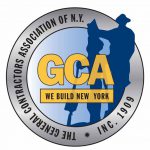First Department Affirms Lower Court Decision Granting Defendant Building Owner Summary Judgment Dismissing Plaintiff’s Complaint In Dog Bite Case
In a decision dated April 4, 2013, the Appellate Division, First Department, unanimously affirmed Justice Larry S. Schachner’s decision dated December 23, 2011, which granted the defendant building owner’s motion for summary judgment dismissing the plaintiff’s complaint against it. The infant plaintiff sought damages for personal injuries allegedly sustained when he was bitten by a dog allegedly owned by a tenant in the defendant building owner’s premises. In granting the defendant building owner’s motion, the lower Court held that the record revealed that the defendant had no notice of the presence of the dog on the premises or of its vicious propensities. The incident also occurred off the defendant building owner’s property and there was no proof of any agency relationship nor was one pled. In light of the foregoing, the First Department held that the lower court properly granted summary judgment to the defendant building owner and dismissed the plaintiff’s complaint as against it.
Desay v. Copo Management, LLC et al., 105 A.D.3d 453, 963 N.Y.S.2d 79 (1st Dep’t 2013)








